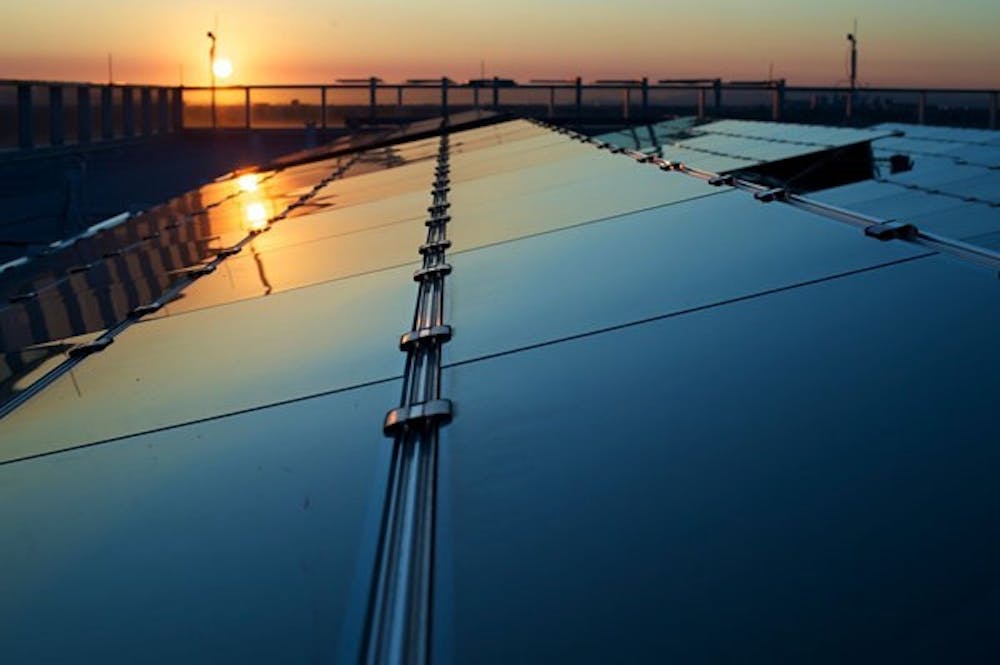Researchers at the Ira A. Fulton Schools of Engineering are working to improve solar technology and make it a more economically feasible alternative energy option.The research focuses on gathering information about the factors that affect the performance and stability of solar panels, and the results could have implications for the University’s efforts to reduce its carbon footprint and increase the use of alternative energy sources.
Current technology using silicon crystals captures less than 20 percent of the solar energy that hits it, said George Maracas, one of the researchers involved in the project.
“We recognized a problem that needs interdisciplinary talent to solve — how to adopt widespread solar power into the grid,” Maracas said.
Much of the process involves sifting through piles of data to monitor how efficiently the system is operating, he said.
“We have to monitor the health of the grid, the output and stability in order to optimize the power coming out and the lifetime of the array,” Maracas said.
Andreas Spanias, the co-director of the project, emphasized the sheer amount of information produced by the systems.
“Data is coming not only from the solar array itself, but also environmental data,” he said. “We are trying to configure the array to be as efficient as possible.”
Spanias added that some of this has to do with the technology available to monitor the systems. Other factors that can affect performance include weather, dust, aging of cells and excessive heat.
“A lot of times if one panel goes wrong, you have to take the whole array out,” he said. “There is a little bit of data mining in that you will look at tons of data and try to figure out if there is an event and what it is.”
Keeping better track of events like weather patterns and malfunctions can minimize the lost productivity they produce, Spanias said.
“There are some periodic events you may want to keep an eye on and adapt your strategies,” he said. “There is also the idea of what are the power grid needs and when does it make sense to bring the array online.”
Director of Sustainability Practices Bonny Bentzin said if it’s successful, the project could increase the role solar energy plays in ASU’s alternative energy and sustainability plans.
“I would like to see us eventually demonstrate the work we are doing in the lab on campus, but obviously if they produce the technology that then goes to market, that’s something we can use on campus as well,” Bentzin said.
How the University functions affects other institutions, she said.
“What ASU does can have an influence on the world, both in how students observe and learn how a campus could be run,” she said. “Also, we can influence the market, both in the products we buy and how we function.”
Reach the reporter at dana.sheaff@asu.edu





